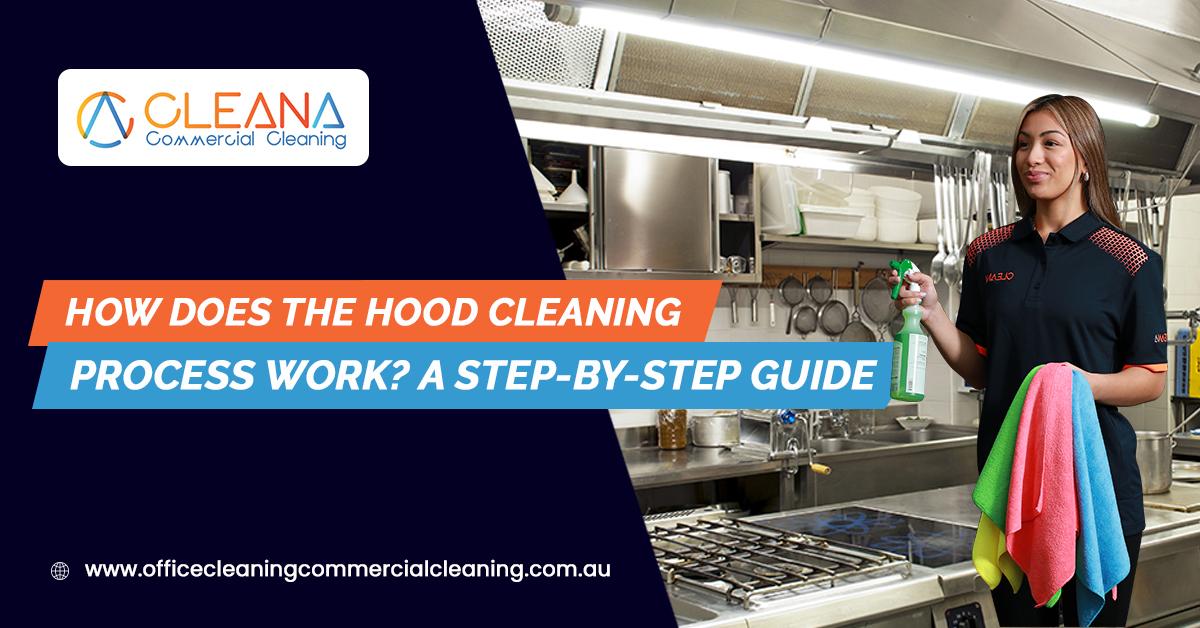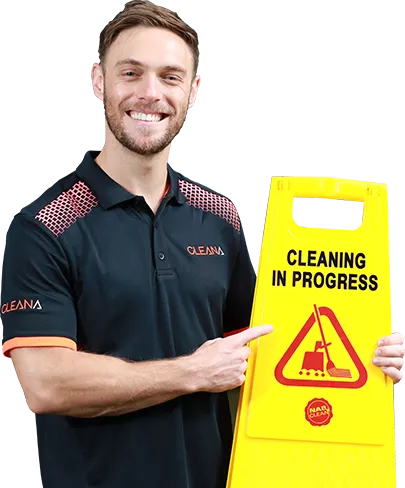The hood cleaning in a commercial kitchen is an essential part of running a restaurant or food business. Nonetheless, many owners and managers may not be aware of what it consists of, and they might not know why it’s important. This guide offers all the necessary information and describes the steps of the process.
Kitchen Exhaust Cleaning Definition
Also known as cleaning the commercial hood, kitchen exhaust system cleaning refers to the grease removal of kitchen exhaust systems, which is vital to maintain a safe and functional kitchen.
Many business managers don’t understand the importance of commercial cleaning their kitchen exhaust systems, but the truth is that it can greatly affect them, especially if the area accumulates grease. It can represent a health hazard, which is why it’s so important to hire the best experts to take care of it.
The Importance of Cleaning Kitchen Exhaust Systems
Investing time and resources in kitchen exhaust system cleaning is one of the best decisions a business owner or manager could do if they run commercial kitchens since it lets them save money, but most importantly, it guarantees they and their workers are safe.
Even though every kitchen exhaust system is made of stainless steel and is not flammable, grease build-up can contribute to restaurant fires going out of control.
If the grease build-up reaches the exhaust ducts and touches the grease, fires can quickly go out of control because of the flammable ingredients in the oils used for cooking.
Nowadays, there are still thousands of kitchen fires each year, so cleaning the exhaust systems in commercial kitchens is crucial to fulfilling Australian standards (passing minimum inspection requirements), and guaranteeing work health.
Although duct cleaning allows managers and owners to guarantee their kitchens are safe, there are other important benefits related to cleaning the exhaust systems. This service, for example, allows the kitchen to be better ventilated, which makes odour and smoke removal much easier.
Kitchens that do not comply with maintenance and cleaning standards risk many things, for instance, being a dangerous place to work in.
At the same time, owners and managers risk getting fined or even mandatory closure since regulations often protect the people who might be in danger while they’re in the area.
Why People Should Hire Experts for Their Kitchen Exhaust System Cleaning
Commercial kitchen exhaust systems are complicated to clean, and they require regular cleaning to manage the grease build-up.
A chef, for example, might believe the kitchen looks clean and complies with food safety standards and Australian standards. However, commercial kitchen cleaning experts may identify safety hazards, such as vents and fans full of grease, which can cause duct fires.
Consequently, to make sure a hood works at peak performance and abides by every Australian standard, the kitchen staff should trust commercial kitchen cleaning professionals for cleaning and maintenance services.
The Process of Kitchen Exhaust Cleaning
Cleaning the kitchen exhaust system in a commercial kitchen requires specific steps, and professionals follow each one of them to ensure their clients that they get the outcomes they want.
CLEANA is a company that can guide clients through the process and provides them with top experts who have the knowledge and experience to help them. The following are the stages to have a clean exhaust system:
Pre-Cleaning Inspection
A pre-cleaning inspection is the first action experts must take when they’re planning to clean the exhaust systems in a commercial kitchen.
Overall, it consists of talking to the manager and asking about wiring problems, possible grease accumulation in specific spots, noisy fans, and so on.
Testing the Condition of Fans and Removing Filters
Although experts must talk to the restaurant staff first, commercial kitchen exhaust cleaning also entails testing all the exhaust fans.
In this stage, the professional wants to guarantee the fans are working the way they should. If they’re not, grease may be accumulating in the ducts, which can hinder their efficiency.
Cleaning the Grease
When experts clean a kitchen exhaust system, they have to take care of the roof first. The inspection might give them some information on whether or not it has dirt and grease, and that’s the first factor they must keep in mind when disinfecting and sanitizing the place.
Securing the Area with Plastic
Once the roof is clean, professionals can start cleaning the exhaust system. However, they must protect other areas with plastic to guarantee they don’t damage kitchen appliances and equipment.
No expert wants dirt on the floor, kitchen equipment, or on roof, so they often use big plastic bags before starting the exhaust cleaning itself.
Initial Scraping and Applying Chemicals
The first part of exhaust cleaning includes scraping the dirt off surfaces, which allows professionals to eliminate as many bacteria as they can.
Once they’re done with scraping, experts must apply safe chemicals to all the exhaust system parts. They must leave them soaking there, and that allows the remaining dirt to be eliminated.
Power-washing the Hood and Other Parts
After the chemicals have done their work in the exhaust system, professionals often power-wash all surfaces to guarantee there is no dirt left.
Power-washing is possible when experts use pressurized water (they often spray around 1,500 to 2,000 psi) on all areas, so any remaining dirt can completely disappear.
Cleaning the Roof and Kitchen
Clearly, the exhaust system cleaning can leave the kitchen somewhat dirty, and no cleaning professional wants the client to manage that on their own.
Thus, once they’re done with the exhaust cleaning process, they can mop the remaining water from the floor, clean the roof, eliminate all residues, and make sure that the area is spotless.
Polishing All Surfaces
When a manager or kitchen owner hires professionals for the cleaning or maintenance service they offer, they sometimes don’t know experts are also in charge of polishing the surroundings.
Kitchen exhaust cleaning does not only mean that the expert has to remove the dirt from the system. The process also includes polishing every surface on the kitchen canopy, which is vital to comply with safety standards, and also to make the place look fantastic.
Re-testing the Exhaust Fans
Experts must turn the fans back on and test them to see if they are in working order. A vital part of kitchen exhaust cleaning is taking the dirt out of the filters, ducts, and all parts of the fans, so if there’s a problem, professionals must deal with it.
Post-Cleaning Inspection and Cleaning Certificate
Once the cleaning process is done, the restaurant owner or manager can accompany the cleaner to inspect the kitchen canopy and surrounding areas.
Additionally, the owner or manager might get a certificate for complying with safety standards, but it depends on their specific location.
In some cases, insurance companies require regular cleaning and maintenance of restaurant kitchens, so the certificate may be important to prove that.
Keynote Takeaways
Cleaning the exhaust system in a kitchen is one of the most important aspects an owner or manager should take care of. A duct fire can reach temperatures that can be very dangerous, so they must be aware of the risks of having a dirty kitchen hood. However, CLEANA has the ideal experts to take care of the job!

